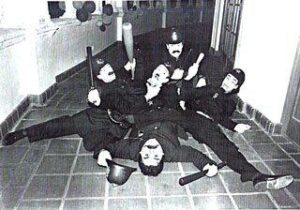Last night I was thinking about some aspects of organization. One of the questions I was looking at was what is the optimum size for a task-orientated team? The correct answer to this depends on what the task is, and also who is making up your team. A grouping of individuals with self-discipline and a concept of duty are likely to achieve much more than the equivalent number of hippies. There is an allegedly Muslim trope I once read that explained why four wives are necessary. One is not enough; two will fight and if there are three two will gang up on the third. That does actually describe some social and working groups I have had to deal with. Answers about optimum team size vary: “no more than five”, “between five and seven”, “four to twelve”, “never more than nine” and so on. It does depend on the situation and the “materials” you are working with. Incidentally, army squad size is usually less than fifteen since this is about the limit of people one leader can co-ordinate with his voice before personal radios etc. For similar reasons, military companies tend to be 150 or less since this was the practical number that an officer could control with drums, bugles or flags.

Following these lines of thought I recalled a section in Simpkin’s “Race to the Swift” that mentioned “packs” and “tribes”. This is on page 216 and attributes the idea to an Anthony Sampson. The pack may be up to a dozen and the tribe several hundred, according to Sampson. Simpkin's own observations were that a soldier’s loyalty seems to revolve around more immediate small units such as a tank crew, gun detachment, fire team etc. He also states that for the junior ranks of the British Army the key object of loyalty in achieving coherent behaviour under fire seemed to be the company.
This obviously brought me back to the idea of Dunbar’s number and I finally got around to reading the “monkeysphere” article by David Wong. It is worth a read.